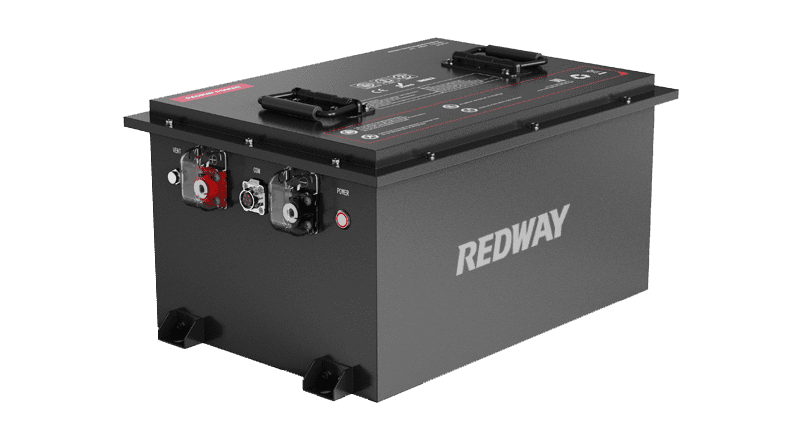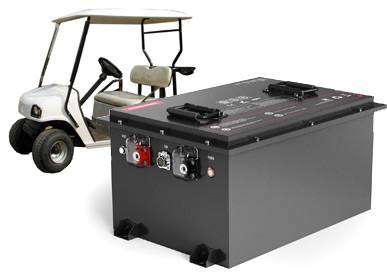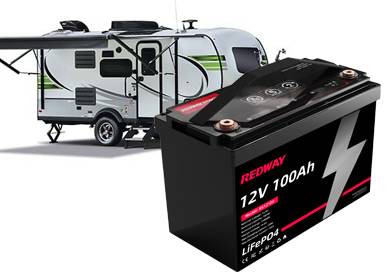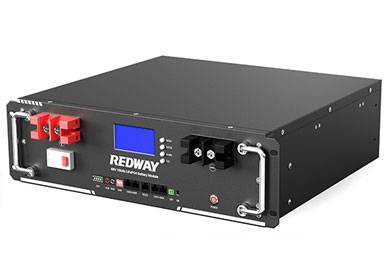- Forklift Lithium Battery
-
48V
- 48V 210Ah
- 48V 300Ah
- 48V 420Ah (949 x 349 x 569 mm)
- 48V 420Ah (950 x 421 x 450 mm)
- 48V 456Ah
- 48V 460Ah (830 x 630 x 590 mm)
- 48V 460Ah (950 x 421 x 450 mm)
- 48V 460Ah (800 x 630 x 600 mm)
- 48V 460Ah (820 x 660 x 470 mm)
- 48V 500Ah
- 48V 560Ah (810 x 630 x 600 mm)
- 48V 560Ah (950 x 592 x 450 mm)
- 48V 600Ah
- 48V 630Ah
-
48V
- Lithium Golf Cart Battery
- 12V Lithium Battery
12V 150Ah Lithium RV Battery
Bluetooth App | BCI Group 31
LiFePO4 Lithium
Discharge Temperature -20°C ~ 65°C
Fast Charger 14.6V 50A
Solar MPPT Charging - 24V Lithium Battery
- 36V Lithium Battery
- 48V Lithium Battery
-
48V LiFePO4 Battery
- 48V 50Ah
- 48V 50Ah (for Golf Carts)
- 48V 60Ah (8D)
- 48V 100Ah (8D)
- 48V 100Ah
- 48V 100Ah (Discharge 100A for Golf Carts)
- 48V 100Ah (Discharge 150A for Golf Carts)
- 48V 100Ah (Discharge 200A for Golf Carts)
- 48V 150Ah (for Golf Carts)
- 48V 160Ah (Discharge 100A for Golf Carts)
- 48V 160Ah (Discharge 160A for Golf Carts)
-
48V LiFePO4 Battery
- 60V Lithium Battery
-
60V LiFePO4 Battery
- 60V 20Ah
- 60V 30Ah
- 60V 50Ah
- 60V 50Ah (Small Size / Side Terminal)
- 60V 100Ah (for Electric Motocycle, Electric Scooter, LSV, AGV)
- 60V 100Ah (for Forklift, AGV, Electric Scooter, Sweeper)
- 60V 150Ah (E-Motocycle / E-Scooter / E-Tricycle / Tour LSV)
- 60V 200Ah (for Forklift, AGV, Electric Scooter, Sweeper)
-
60V LiFePO4 Battery
- 72V~96V Lithium Battery
- Rack-mounted Lithium Battery
- E-Bike Battery
- All-in-One Home-ESS
- Wall-mount Battery ESS
-
Home-ESS Lithium Battery PowerWall
- 24V 100Ah 2.4kWh PW24100-S PowerWall
- 48V 50Ah 2.4kWh PW4850-S PowerWall
- 48V 50Ah 2.56kWh PW5150-S PowerWall
- 48V 100Ah 5.12kWh PW51100-F PowerWall (IP65)
- 48V 100Ah 5.12kWh PW51100-S PowerWall
- 48V 100Ah 5.12kWh PW51100-H PowerWall
- 48V 200Ah 10kWh PW51200-H PowerWall
- 48V 300Ah 15kWh PW51300-H PowerWall
PowerWall 51.2V 100Ah LiFePO4 Lithium Battery
Highly popular in Asia and Eastern Europe.
CE Certification | Home-ESS -
Home-ESS Lithium Battery PowerWall
- Portable Power Stations
Lithium Battery Selection Guide
Slide 1 Heading
Lorem ipsum dolor sit amet consectetur adipiscing elit dolor
Click Here
Slide 2 Heading
Lorem ipsum dolor sit amet consectetur adipiscing elit dolor
Click Here
Slide 3 Heading
Lorem ipsum dolor sit amet consectetur adipiscing elit dolor
Click Here
Redway Power OEM Lithium Battery
Featured Batteries
Inquiry Now
Looking for reliable, efficient, and long-lasting energy solutions for your RVs, marine, golf carts, forklifts, or electric scooters? Our cutting-edge lithium batteries are designed to meet the rigorous demands of these applications, providing exceptional performance and value for your vehicles and equipment.
Redway OEM 200,000 PCS Lithium Batteries Per Month
OEM and ODM Lithium Battery Factory. Flagship: Rack-mounted Lithium Batteries, Golf Cart Lithium Batteries, 12V~72V LiFePO4 Batteries, Forklift Lithium Batteries, E-Bike Lithium Batteries, Power Bank and Clothing Heating Batteries.
Redway Power Factory Automatic Production Lines
51.2V 100Ah Rack-mounted Lithium Battery
Golf Cart Lithium Batteries Series
OEM / ODM Lithium Batteries
Excellent OEM Lithium Batteries
24V 200Ah RV Lithium Battery
| Basic | 25.6V, 100Ah |
|---|---|
| Rated Energy | 2.56kWh |
| Dimensions | 523 x 269 x 218 mm (Group 8D) |
| Weight | 40 kg |
| Cell Type | LiFePO4 (EVE) |
| Functions | Self-heating / Bluetooth App |
0%
12V 150Ah Marine Lithium Battery
| Basic | 12.8V, 150Ah |
|---|---|
| Energy | 1.92kWh |
| Dimensions | 330 x 172 x 215 mm (Group 31) |
| Weight | 14kg |
| Cell Type | LiFePO4 (EVE) |
| Functions | Self-heating / Bluetooth App |
2 Wheels Electric Scooter Lithium Battery
| Basic | 72V, 27Ah |
|---|---|
| Energy | 1.9kWh |
| Dimensions | 210 x 85 x 41 mm |
| Weight | 10 kg |
| Cell Type | NMC Lithium (21700) |
| Cycle Life | >1500 Times |
48V 100Ah Lithium Golf Cart Battery
| Basic | 51.2V, 100Ah |
|---|---|
| Energy | 5.12kWh |
| Dimensions | 500 x 355 x 247 mm |
| Cell Type | LiFePO4 (EVE) |
| Cycle Life | >6000 cycles (DOD 80%) |
| OEM | 50,000 PCS per month |
0%

15
Jan
How Can Effective Supply Chain Management Optimize Battery Operations?
-
Posted by
adminw
Effective supply chain management is crucial in optimizing battery operations across various industries. This ...
15
Jan
How Do 36V Forklift Batteries Enhance Operational Efficiency?
-
Posted by
adminw
Understanding the specifications and performance metrics of 36V forklift batteries is crucial for optimizing w...
14
Jan
How Can Forklift Batteries Be Used with Solar Power?
-
Posted by
adminw
Forklift batteries can be effectively utilized alongside solar energy systems, creating a sustainable solution...
14
Jan
How Do Standards and Regulations Impact Industrial Equipment?
-
Posted by
adminw
Standards and regulations play a vital role in ensuring the safety, efficiency, and sustainability of industri...
Inquiry Now
Lithium Golf Cart Battery, Lithium Forklift Battery, Electric Scooter Battery, Lithium RV Battery
Why Choose Redway Power's LiFePO4 Batteries?
Redway Power specializes in high-quality LiFePO4 batteries for various applications, including forklifts, golf carts, and RVs. Our forklift batteries feature superior energy density, compact design, and enhanced safety with a lower risk of thermal runaway. They offer a long cycle life of over 10 years and rapid charging capabilities to minimize downtime.
For golf carts, our LiFePO4 batteries provide over 6000 cycles with high discharge rates and are available in multiple voltages. We support OEM/ODM customization to meet your specific business needs, ensuring reliable performance for your customers.
As a leading manufacturer for RV batteries, Redway Power combines over 12 years of experience with authorized partnerships with CATL and BYD. Our batteries are lightweight and efficient, making them ideal for recreational vehicles. We offer tailored solutions with dedicated engineering support to help you design the perfect battery for your application.











































